PART ONE: ART AND URBANISM
When Abstract Expressionists explored the terrain of the canvas and Pollock created something of a disorientation map by putting his unstretched canvases on the floor, few observers and doubtless fewer painters would have acknowledged a relationship between their concerns and real estate, let alone transnational capital flows.
Space, as many observers have noted, has displaced time as the operative dimension of advanced, globalizing (and post-industrial?) capitalism.1 Time itself, under this economic regime, has been differentiated, spatialized, and divided into increasingly smaller units.2 Even in virtual regimes, space entails visuality in one way or another. The connection between Renaissance perspective and the enclosures of late medieval Europe, together with the new idea of terrain as a real-world space to be negotiated, supplying crossing points for commerce, was only belatedly apparent. Similarly, the rise of photography has been traced to such phenomena as the encoding of earthly space and the enclosing of land in the interest of ground rent. For a long time now, art and commerce have not simply taken place side by side, but have actively set the terms for one another, creating and securing worlds and spaces in turn.
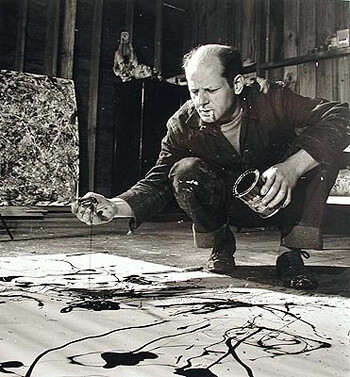

My task here is to explore the positioning of what urban business evangelist Richard Florida has branded the “creative class,” and its role, ascribed and anointed, in reshaping economies in cities, regions, and societies. In pursuit of that aim, I will consider a number of theories—some of them conflicting—of the urban and of forms of subjectivity. In reviewing the history of postwar urban transformations, I consider the culture of the art world on the one hand, and, on the other, the ways in which the shape of experience and identity under the regime of the urban render chimerical the search for certain desirable attributes in the spaces we visit or inhabit. Considering the creative-class hypothesis of Richard Florida and others requires us first to tease apart and then rejoin the urbanist and the cultural strains of this argument. I would maintain, along with many observers, that in any understanding of postwar capitalism, the role of culture has become pivotal.
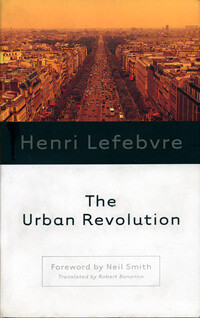

I open the discussion with the French philosopher and sometime Surrealist Henri Lefebvre, whose theorization of the creation and capitalization of types of space has been enormously productive. Lefebvre begins his book of 1970, The Urban Revolution, as follows:
I’ll begin with the following hypothesis: Society has been completely urbanized. This hypothesis implies a definition: An urban society is a society that results from a process of complete urbanization. This urbanization is virtual today, but will become real in the future.3
Lefebvre’s book helped usher in a modern version of political geography, influencing Fredric Jameson, David Harvey, and Manuel Castells, among other prominent writers and theorists of both culture and the urban (Harvey, in turn, is cited as an influence by Richard Florida). In his introduction to Lefebvre’s book, geographer Neil Smith writes that Lefebvre “put the urban on the agenda as an explicit locus and target of political organizing.”4
Succumbing to neither empiricism nor positivism, Lefebvre did not hesitate to describe the urban as a virtual state whose full instantiation in human societies still lay in the future. In Lefebvre’s typology, the earliest cities were political, organized around institutions of governance. The political city was eventually supplanted in the Middle Ages by the mercantile city, organized around the marketplace, and then by the industrial city, finally entering a critical zone on the way to a full absorption of the agrarian by the urban. Even in less developed, agrarian societies that do not (yet) appear to be either industrialized or urban, agriculture is subject to the demands and constraints of industrialization. In other words, the urban paradigm has overtaken and subsumed all others, determining the social relations and the conduct of daily life within them. (Indeed, the very concept of “daily life” is itself a product of industrialism and the urban.)
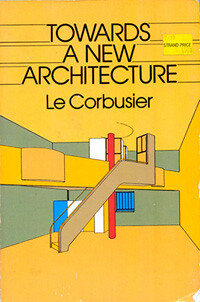

Lefebvre’s emphasis on the city contradicted the orderliness of Le Corbusier, whom he charged with having failed to recognize that the street is the site of a living disorder, a place, in his words, to play and learn; it is a site of “the informative function, the symbolic function, the ludic function.”5 Lefebvre cites the observations of the foundational urban observer Jane Jacobs, and identifies the street itself, with its bustle and life, as the only security against violence and criminality. Finally, Lefebvre notes—soon after the events and discourses of May ‘68 in France—that revolution takes place in the street, creating a new order out of disorder.
The complexity of city life often appears, from a governmental standpoint, to be a troublesome Gordian knot to be disentangled or sliced through. A central task of modernity has been the amelioration and pacification of the cities of the industrializing metropolitan core; the need was already apparent by the middle of the nineteenth century, when the prime examples were those at the epicenter of industrialism, London and Manchester.6 Control of these newly urbanizing populations also required raising them to subsistence level, which happened gradually over the succeeding decades, and not without tremendous struggles and upheaval. Industrialization also vastly increased the flow of people to cities, as it continues to do—even in poor countries with very low-income levels per capita—to the extent that Lefebvre’s prediction regarding full urbanization is soon to come true; since 2005, there are more people living in cities than in the countryside.7
In the advanced industrial economies, twentieth-century urban planning encompassed not only the engineering of new transportation modalities but also the creation of new neighborhoods with improved housing for the working classes and the poor. For a few brief decades, the future seemed within the grasp of the modern. After the Second World War, bombed-out European cities provided something of a blank canvas, delighting the likes of W.G. Witteveen, a Rotterdam civil engineer and architect who exulted in the possibilities provided by the near-total destruction of that port city by Nazi bombing in May 1940. In many intact or nearly intact cities in the US and Western Europe, both urban renewal and postwar reconstruction followed a similar plan: clear out the old and narrow, divide or replace the dilapidated neighborhoods with better roads and public transport.8 While small industrial production continued as the urban economic backbone, many cities also invited the burgeoning corporate and financial services sectors to locate their headquarters there, sweetening their appeal through zoning adjustments and tax breaks. International Style commercial skyscrapers sprouted around the world as cities became concentrations, real and symbolic, of state and corporate administration.
The theoretical underpinning for a renovated cityscape came primarily from the earlier, utopian “millennial” and interwar designs of forward-looking, albeit totalizing, plans for remaking the built environment. It was not lost on the city poor that so-called urban renewal projects targeted their neighborhoods and the cultural traditions that enlivened them. Cities were being remade for the benefit of the middle and upper classes, and the destruction of the older neighborhoods—whether in the interest of commercial, civic, or other forces, such as enhanced mobility for trucks and private cars—extirpated the haunts of those beyond the reach of law and bourgeois proclivities, adversely affecting the lives and culture of the poorer residents.
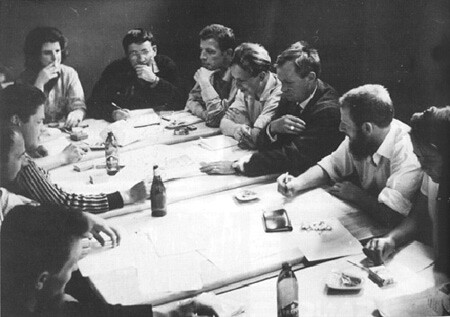

One may trace the grounding of the mid-century European group the Situationist International in a recognition of the growing role of the visual—and its relation to spatiality—in modern capitalism, and thus the complicit role of art in systems of exploitation. The core French group of Situationists—Lefebvre’s sometime students (and, some might say, collaborators and certainly occasional adversaries)—attacked, as Lefebvre had done, the radiant-city visions of Le Corbusier (and by implication other utopian modernists) for designing a carceral city in which the poor are locked up and thrust into a strangely narrow utopia of light and space, but removed from a free social life in the streets. (Le Corbusier’s housing projects called “Unités d’Habitation,” the most famous of which is in Marseille, were elevated above their garden surrounds on pilotis. The floors were called rues, or streets, and one such “street” was to be devoted to shops; kindergartens and—at least in the one I visited, in Firminy, near St. Etienne—a low-powered radio station were also located within the building, together suggesting the conditions of a walled city.)
We will leave Monsieur Le Corbusier’s style to him, a style suitable for factories and hospitals, and no doubt eventually for prisons. (Doesn’t he already build churches?) Some sort of psychological repression dominates this individual—whose face is as ugly as his conceptions of the world—such that he wants to squash people under ignoble masses of reinforced concrete, a noble material that should rather be used to enable an aerial articulation of space that could surpass the flamboyant Gothic style. His cretinizing influence is immense. A Le Corbusier model is the only image that arouses in me the idea of immediate suicide. He is destroying the last remnants of joy. And of love, passion, freedom.
—Ivan Chetcheglov9
Perhaps it is the primacy of the spatial register, with its emphasis on visuality, but also its turn to virtuality, to representation, that also accounts for architecture’s return to prominence in the imaginary of the arts, displacing not only music but architecture’s spectral double, the cinema. This change in the conduct of everyday life, and the centrality of the city to such changes, were apparent to the Situationists, and Debord’s concept of what he termed “the society of the spectacle” is larger than any particular instances of architecture or real estate, and certainly larger than questions of cinema or television. Debord’s “spectacle” denotes the all-encompassing, controlling nature of modern industrial and “post-industrial” culture. Thus, Debord defines the spectacle not in terms of representation alone but also in terms of the social relations of capitalism and its ability to subsume all into representation: “The spectacle is not a collection of images; rather, it is a social relationship between people that is mediated by images.”10 Elements of culture were in the forefront, but the focus was quite properly on the dominant mode of production.
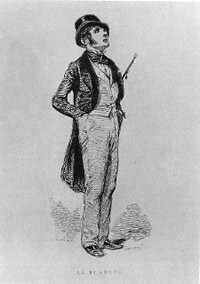

The Situationists’ engagement with city life included a practice they called the dérive. The dérive, an exploration of urban neighborhoods, a version of the nineteenth-century tradition of the flâneur, and an inversion of the bourgeois promenade of the boulevards (concerned as the latter was with visibility to others, while the flâneur’s was directed toward his own experience), hinged on the relatively free flow of organic life in the neighborhoods, a freedom from bureaucratic control, that dynamic element of life also powerfully detailed by Lefebvre and Jane Jacobs. Both Baudelaire and Benjamin gave the flâneur prominence, and by the end of the twentieth century the flâneur was adopted as a favored, if minor, figure for architects wishing to add pedestrian cachet to projects such as shopping malls that mimic public plazas—thus closing the book on the unadministered spaces that the Situationists, at least, were concerned with defending.
The Western art world has periodically rediscovered the Situationists, who presently occupy what a friend has described as a quasi-religious position, embodying every aspiring artist/revolutionary’s deepest wish—to be in both the political and the artistic vanguard simultaneously. The ghostly presence of the Situationists, including Debord, Asger Jorn, Raoul Vaneigem, and Constant, predictably took up residence at the moment the very idea of the artistic vanguard disappeared. The cautionary dilemma they pose is how to combat the power of “spectacle culture” under advanced capitalism without following their decision to abandon the terrain of art (as Duchamp had done earlier). To address this question, context and history are required. Let us continue with the events of the 1960s, in the Situationists’ moment—characterized by rising economic expectations for the postwar generation in the West and beyond, but also by riot and revolt, both internal and external.
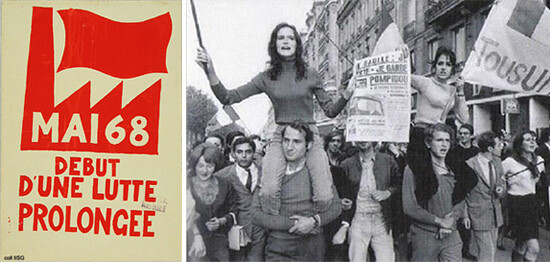

By the 1960s, deindustrialization was on the horizon of many cities in the US and elsewhere as the flight of manufacturing capital to nonunion areas and overseas was gathering steam, often abetted by state policy. In an era of decline for central cities, thanks to suburbanization and corporate, as well as middle-class (white) flight, a new transformation was required. Dilapidated downtown neighborhoods became the focus of city administrations seeking ways to revive them while simultaneously withdrawing city services from the remaining poor residents, ideally without fomenting disorder. In Paris, riven by unrest during the Algerian War, the chosen solution encompassed pacification through police mobilization and the evacuation of poor residents to a new, outer ring of suburbs, or banlieues, yoking the utopian high-rise scheme to the postwar banishment of the urban poor and the dangerous classes.11 By 1967, the lack of economic viability of these banlieues, and the particular stress that put on housewives, was widely recognized, becoming the subject of Jean-Luc Godard’s brilliant film Two or Three Things I Know About Her.
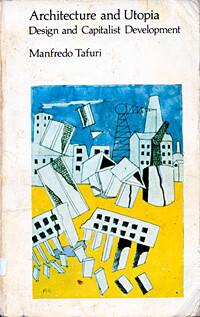

In other countries, conversely, the viability of “housing projects” or “council housing” in improving the lives of the urban poor has been increasingly challenged, and it is an article of neoliberal faith that such projects cannot succeed—a prophecy fulfilled by the covert racial policies underlying the siting of these projects and the selection of residents, followed, in cities that wish to tear them down, by consistent underfunding of maintenance and services. In Britain the Thatcherist solution was to sell the flats to the residents, with the rationale of making the poor into stakeholders, with results yet to be determined (although the pitfalls seem obvious). With the failure of many state-initiated postwar housing schemes for the poor supplying a key exhibit in neoliberal urban doctrine, postmodern architecture showed itself willing to jettison humanism in the wake of the ruin of the grand claims of utopian modernism. In the US, commentator Charles Jencks famously identified as “the moment of postmodernism” the phased implosion in 1972—in a bemusing choreography often replayed today—of the Pruitt-Igoe housing project, a 33-building modernist complex in St. Louis, Missouri. Pruitt-Igoe, commissioned in 1950 during an era of postwar optimism, had been built to house those who had moved to the city for war work—primarily proletarianized African-Americans from the rural South.
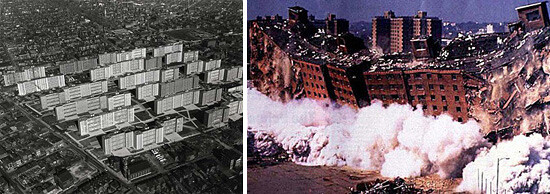

The abandonment of the widely held twentieth-century paradigm of state- and municipality-sponsored housing thus properly joined the other retreats from utopianism that constituted the narratives of postmodernism. Either blowing up or selling off housing projects has subsequently been adopted enthusiastically by many US cities, such as Newark, New Jersey, which happily supplied a mediatized spectacle of eviction and displacement—but so far has not reached my home city, New York, primarily because, as a matter of policy, New York’s housing projects have never occupied the center of town. In post-Katrina New Orleans, however, the moment of Schumpeterian creative destruction allowed for the closure tout court of the largely undamaged, 1200-home Lafitte Public Housing Development in the Lower Ninth Ward (the project was demolished without fanfare or fireworks in 2008).
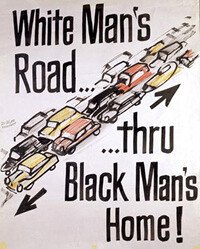

Throughout the 1960s, as former metropolitan empires schemed, struggled, and strong-armed to secure alternative ways to maintain cheap access to productive resources and raw materials in the post-colonial world, the Western democracies, because of unrest among young people and minorities centering on increasing demands for political agency, were diagnosed by policy elites as ungovernable. In a number of cities, as middle-class adults, and some young “hippies,” were leaving, groups of other people, including students and working class families, took part in poor people’s housing initiatives that included sweat equity (in which the municipality grants ownership rights to those who form collectives to rehabilitate decayed tenement properties, generally the ones in which they are living) or squatting. In cities that have not succeeded, as New York and London have done, in turning themselves into centers of capital concentration through finance, insurance, and real estate, the squatter movement has had a long tail and still figures in many European cities. In the US, the urban homesteading movement, primarily accomplished through the individual purchase of distressed homes, quickly became recognized as a new, more benign way of colonizing neighborhoods and driving out the poor. Such new middle-class residents were often referred to by real-estate interests and their newspaper flacks—not to mention an enthusiastic Mayor Ed Koch— as “urban pioneers,” as though the old neighborhoods could be understood according to the model of the Wild West. These developments surely seemed organic to the individuals moving in; as threatened communities began to resist, however, the process of change quickly enough gained a name: gentrification.
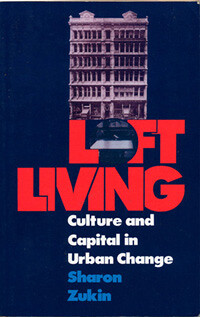

In some major cities, some of the colonizers were artists, writers, actors, dancers, and poets. Many lived in old tenements; but artists did not so much want apartments as places to work and live, and the ideal spaces were disused factories or manufacturing lofts. In New York, while poets, actors, dancers, and writers were moving to such old working-class residential areas as the Lower East Side, many artists took up residence in nearby manufacturing-loft neighborhoods. Artists had been living in lofts since at least the 1950s, and while the city winked at such residents, it still considered their situation to be both temporary and illegal. But loft-dwelling artists continued agitating for city recognition and protection, which appeared increasingly likely to be granted as the 1960s advanced.
A canny observer of this process was New York City-based urban sociologist Sharon Zukin. In her book Loft Living: Culture and Capital in Urban Change, published in 1982, Zukin writes about the role of artists in making “loft living” comprehensible, even desirable. She focuses on the transformation, beginning in the mid-1960s, of New York’s cast-iron district into an “artist district” that was eventually dubbed Soho. In this remarkable book, Zukin lays out a theory of urban change in which artists and the entire visual art sector—especially commercial galleries, artist-run spaces, and museums—are a main engine for the repurposing of the post-industrial city and the renegotiation of real estate for the benefit of elites. She writes:
Looking at loft living in terms of terrain and markets rather than “lifestyle” links changes in the built environment with the collective appropriation of public goods. … studying the formation of markets … directs attention to investors rather than consumers as the source of change.12
Zukin demonstrates how this policy change was carried forward by city officials, art supporters, and well-placed art patrons serving on land-use commissions and occupying other seats of power.
The creation of constituencies for historic preservation and the arts carried over a fascination with old buildings and artists’ studios into a collective appropriation of these spaces for modern residential and commercial use. In the grand scheme of things, loft living gave the coup de grâce to the old manufacturing base of cities like New York and brought on the final stage of their transformation into service-sector capitals.13
Reminding us that “by the 1970s, art suggested a new platform to politicians who were tired of dealing with urban poverty,” Zukin quotes an artist looking back ruefully at the creation of Soho as a district that addressed the needs of artists rather than those of the poor:
At the final hearing where the Board of Estimate voted to approve SoHo as an artists’ district, there were lots of other groups giving testimony on other matters. Poor people from the South Bronx and Bed-Stuy complaining about rats, rent control, and things like that. The board just shelved those matters and moved right along. They didn’t know how to proceed. Then they came to us. All the press secretaries were there, and the journalists. The klieg lights went on, and the cameras started to roll. And all these guys started making speeches about the importance of art to New York City.14
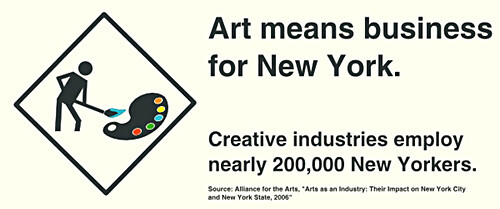

One of Zukin’s many exhibits is this published remark by Dick Netzer, a prominent member of New York’s Municipal Assistance Corporation, the rescue agency set up during New York City’s fiscal near-default:
The arts may be small in economic terms even in this region, but the arts “industry” is one of our few growth industries … The concentration of the arts in New York is one of the attributes that makes it distinctive, and distinctive in a positive sense: the arts in New York are a magnet for the rest of the world.15


Many cities, especially those lacking significant cultural sectors, established other revitalization strategies. Efforts to attract desirable corporations to post-industrial cities soon provoked the realization that it was the human capital in the persons of the managerial elites were the ones whose needs and desires should be addressed. The provision of so-called quality-of-life enhancements to attract these high earners became urban doctrine, a formula consisting of providing delights for the male managers in the form of convention centers and sports stadia, and for the wives, museums, dance, and the symphony. An early, high-profile example of the edifice complex as proposed urban enhancement is provided by the John Portman–designed Detroit Renaissance Center of 1977—a seven-skyscraper riverfront complex owned by General Motors and housing its world headquarters, and including the tallest building in Michigan—meant as a revitalizing engine in the car city that has more recently been cast as the poster child for deindustrialization. But eventually, despite all the bond-funded tax breaks paradoxically given to these edifices, and all the money devoted to support of the arts, cities were failing to build an adequate corporate tax base, even after the trend toward flight from city living had long been reversed. This strategy has continued to be instituted despite its failures, but a better way had to be found. The search for more and better revitalization, and more and better magnets for high earners and tourists, eventually took a cultural turn, building on the success of artists’ districts in post-industrial economies.
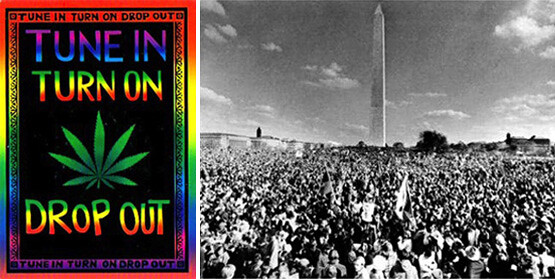

During the turbulent 1960s, the rising middle-class members of the postwar “baby boom” constituted a huge cohort of young people. Whereas the older generation lived lives that seemed primarily to revolve around family and work, the upcoming generation seemed to center theirs primarily on other, more personal and consumerist sources, including the counterculture: music, newspapers, cheap fashion, and the like, coupled with rejection of the corporate “rat race,” majoritarian rule, repressive behavioral codes, and “death culture,” or militarism (nuclear war and Vietnam)—and often rejection of urbanism itself. This highly visible group was closely watched for its tastes. Advertising and marketing, already at what seemed like saturation levels, could segment the market, aiming one set of messages at traditionalist consumers and the other at young people, and “culture” was transformed into an assemblage of purchases. The youth theme was “revolution”— political “revolution,” whether real, imaginary, or, as it gradually became, one centered on consumerism.


Constellations of consumer choice were studied by research institutes such as the Stanford Research Institute (SRI) based at Stanford, an elite private California university. Founded by Stanford trustees in 1946 to support economic development in the region, SRI International, as it is now officially known, currently describes its mission as “discovery and the application of science and technology for knowledge, commerce, prosperity, and peace.” It was forced off the university campus into stand-alone status in 1970 by students protesting against its military research.
“Lifestyle,” an index to the changes in the terrain of consumerism, was a neologism of the 1960s that quickly became comfortable in everyone’s mouth. In 1978, SRI announced a lifestyle metric, the Values and Lifestyles (VALS) “psychographic,” dubbed by Advertising Age as “one of the ten top market research breakthroughs of the 1980s.”16 VALS today seeks “to find out about a person’s product ownership, media preferences, hobbies, additional demographics, or attitudes (for example, about global warming).”17 (Its categories are innovators, thinkers, achievers, experiencers, believers, strivers, makers, and survivors, which articulate in primary and secondary dimensions.) The VALS website establishes its connection to other survey vehicles that provide in-depth information, among other preferences, about how each of the eight VALS types uses, invests, and saves money. Such detailed data helped marketers early on to determine how to tailor their pitches—even for matters that should be subjects of debate in the public square.
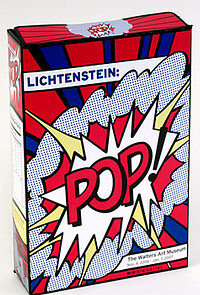

Thus, the concept of taste, one of the key markers of social class—understood here as determined by one’s economic relation to the means of production—became transformed into something apparently lacking in hierarchical importance or relationship to power. Rather than representing membership in an economic or even a social group, taste aligns a person with other consumer affinities. In the 1960s, the Greenbergian paradigm based in a Kantian schema of faculties in which taste is the key operator for people of sensibility, also fell. While it would be absurd to conflate the Kantian faculty of taste with consumer taste, there remains a case to be made that the ideas energizing vanguard art shift along with shifts in the social worldview. In a pre-postmodern moment, so to speak, when artists were exhibiting a certain panic over the relentlessly ascending tide of consumerism and mass culture, and Pop art was bidding for a mass audience, the terms of culture shifted.18
A great deal has been asked of artists, in every modern age. In previous eras artists were asked to edify society by showing forth the good, the true, and the beautiful. But such expectations have increasingly come to seem quaint as art has lost its firm connections to the powers of church and state. Especially since the romantics, artists have routinely harbored messianic desires, the longing to take a high position in social matters, to play a transformative role in political affairs; this may be finally understood as a necessary—though perhaps only imaginary—corrective to their roles, both uncomfortable and insecure, as handmaidens to wealth and power. Artists working under patronage conditions had produced according to command, which left them to express their personal dimension primarily through the formal elements of the chosen themes. By the nineteenth century, artists, now no longer supported by patronage, were free to devise and follow many different approaches both to form and to content, including realism and direct social commentary.19 Still, the new middle-class customers, as well as the state, had their own preferences and demands, even if a certain degree of transgression was both anticipated and accepted, however provisionally (the Salon des Refusés was, after all, established by Napoléon III). The fin de siècle refuge in formalist arguments, in aestheticism, or “art for art’s sake,” has been called by such scholars as John Fekete a defensive maneuver on the part of the era’s advanced artists, establishing a professional distance from the social and honoring the preferences of their high-bourgeois market following a century marked by European revolutions and in the midst of industrial-labor militancy.20 In the US, the lionization of art by social and political elites in the new century’s first fifty years had been effective in the acculturation of immigrants, and of the native working class to some degree. Especially in the postwar period, the ramping up of advanced, formalist art provided a secular approach to the transcendent. The mid-twentieth-century rhetorics of artistic autonomy, in the US at least, reassured the knowing public that formalism, and, all the more so, abstraction, would constitute a bulwark against totalitarian leanings. This tacit understanding had been especially persuasive in keeping prudent artists away from political engagement during the Cold War in the 1950s. Under those conditions, only autonomous art could claim to be an art of critique, but advanced, let alone abstract, art could hardly expect to address large numbers of people. Thus, the “professionalization” of art also doomed it to be a highly restricted discourse.21
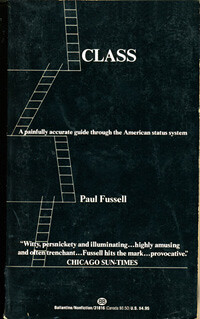

Let us look at taste not as a decision reflecting the well-formedness or virtue of an artistic utterance but through the wider popular meaning of the exercise of choice among a range of goods, tangible and intangible (but mostly the former)—that is, as an expression of “lifestyle.” Taste has expressed class membership and social status in every modern industrial society. In 1983, the American cultural historian and English professor Paul Fussell, author of the acclaimed book The Great War and Modern Memory (1975), published a slim, acerbically acute book called Class: A Guide Through the American Status System.22 There were earlier treatises on ruling elites, such as American sociologist C. Wright Mills’s Power Elite or British linguist Alan Ross’s 1954 article on distinctions between U and non-U speech patterns, in which U refers to the “upper class” (a discussion that caused an Anglo-American stir when picked up by Nancy Mitford) and Arthur Marwick’s Class: Image and Reality (1980), cited by Fussell.23 Fussell meant his book as a popular exposé that taste is not a personal attribute so much as an expression of a definable “socioeconomic” grouping, and in his preface he gleefully describes the horrified, even explosive, reactions middle-class people displayed to the mere mention of class. His scathing description of the missteps of the non-elite are well situated in economic class categories; it is only when he arrives at a class of taste he calls Class X—of which he considers himself a member—that he loses his bearings, besotted by this motley group of self-actualizing people who are mostly university-based and float free of the demands of social codes of dress and behavior, pleasing only themselves. We should recognize in this group not just the expression of the counterculture, now grown up and college educated, but also of the gold mine that had just begun to be intensively lobbied by niche marketers, the “creative class”—a social formation and process that seems to have escaped Fussell’s notice.
A couple of decades later in 2000, the conservative ideologue and US media figure David Brooks, in his best-selling book Bobos in Paradise: The New Upper Class and How They Got There, quipped that “counter-cultural values have infused the business world—the one sphere of US life where people still talk about fomenting ‘revolution’ and are taken seriously.”24 His thesis is that in this new information age, members of the highly educated elite “have one foot in the bohemian world of creativity and another foot in the bourgeois realm of ambition and worldly success.”25 Brooks’s barbed witticisms claim the triumph of capital over any possible other political world that young people different from him, in the Western democracies and particularly the US, had hoped to create:
We’re by now all familiar with modern-day executives who have moved from SDS to CEO, from LSD to IPO. Indeed, sometimes you get the impression the Free Speech movement produced more corporate executives than Harvard Business School.26
To decode a bit: “SDS” denotes the emblematic 1960s radical group Students for a Democratic Society; “IPO” stands for a corporation’s initial public offering; and the Free Speech movement was the student movement at the elite (though public) University of California, Berkeley, that agitated on several fronts, sparking the worldwide student movements of the 1960s.
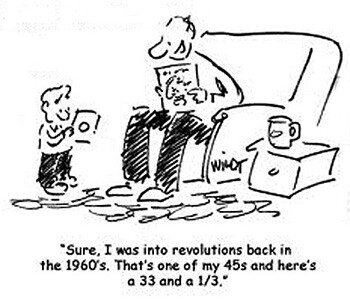

The French intelligentsia have derisively extracted Brooks’s neologism “Bobos” from his celebratory analysis, and the book is worth dwelling on here only because of its concentration on taste classes and their relationship to power and influence, and, less centrally, their relevance to literature and criticism.27 Brooks traces his own intellectual forebears to “the world and ideas of the mid-1950s,” remarking regressively:
[W]hile the fever and froth of the 1960s have largely burned away, the ideas of these 1950s intellectuals [William Whyte, Jane Jacobs, J.K. Galbraith, Vance Packard, E. Digby Baltzell] continue to resonate. 28
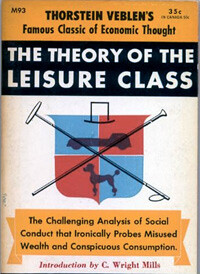

Lowering expectations of rigor, Brooks refers to his work as “comic sociology.” He compliments his readers on their quirky tastes while ignoring those who do not fit his consumer taste class. The “conspicuous consumption” pattern first described by Thorstein Veblen in The Theory of the Leisure Class, published in 1899 during the robber baron era, seemingly does not fit the preferences of the Bobos, who unlike the gilded-age business (but not, it should be noted, technical) class, prefer to spend lots of money on things that appear to be useful and “virtuous”—an adjective often employed ironically in Bobos.
A decade later, the laid-back, tolerant wisdom of the benign “Bobo” class-in-ascendancy now appears ephemeral, since in the interim the ostentatious rich have led us into crushingly expensive wars, destroyed the financial markets, restored nepotism, and mobilized the old working class and rural dwellers using a dangerous breed of hater-malarkey to grab and keep political control, all the while becoming vastly richer. Reviewing Brooks, Russell Mokhiber writes,
Most people in the United States (let alone the world) do not share [the Bobos’] expanding wealth and may have markedly different views on important issues, including concepts of “deservedness,” fairness, government regulation, and equitable distribution of wealth. For this majority of the population, more confrontation, not less, could be just what is in order.29
Soon after the collapse of the millennial New Economy that was supposed to raise all boats, Richard Florida, in his best-selling book The Rise of the Creative Class (2002), instituted a way of talking about the effects of the needs and choices of Sharon Zukin’s, as well as, more broadly, Brooks’s and Fussell’s, target group that framed the positioning of the “creative class”—that cooperative group—as a living blueprint for urban planners.30
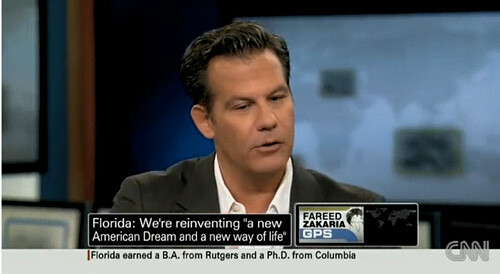

Turn-of-the-century changes in the composition of the productive classes in the United States and Western Europe as a result of “globalization”—in which mass industrial work shifted East and South and white-collar technical labor in the developed industries rose to ascendancy during the dot-com boom—led to further speculation on the nature of these workers, but seemingly these were more solidly empirical efforts than Brooks’s mischievous rendition. Enter Richard Florida, professor at postindustrial Pittsburgh’s Carnegie Mellon University, with theories catering to the continuing desire of municipalities such as Pittsburgh to attract those middle-class high-wage earners.
The next installment of this article will address Florida’s hypotheses and prescriptions.
See, for example, Henri Lefebvre, The Production of Space, trans. Donald Nicholson-Smith (Oxford: Blackwell, 1991), passim. See also Georg Lukács, History and Class Consciousness: Studies in Marxist Dialectics, trans. Rodney Livingstone (London: Merlin Press, 1971); Lukács, interpreting Marx on the development of abstract labor under capitalism, writes that “time sheds its qualitative, variable, flowing nature; it freezes into an exactly delimited, quantifiable continuum filled with quantifiable ‘things’ … in short, it becomes space,” 90.
A more substantial discussion would need to take account of how the space-time continuum privileges one or the other dimension and how the primacy of each changes with economic regimes.
Henri Lefebvre, The Urban Revolution (Minneapolis: University of Minnesota Press, 2003), 1.
Ibid., vii.
Ibid., 18.
Consider such basic matters as the management of violent crime, prostitution, sanitation, and disease.
See Mike Davis, “Planet of Slums,” New Left Review 26 (March–April 2004): 6. “The present urban population (3.2 billion) is larger than the total population of the world in 1960. The global countryside, meanwhile, has reached its maximum population (3.2 billion) and will begin to shrink after 2020. As a result, cities will account for all future world population growth, which is expected to peak at about 10 billion in 2050.” (See also Davis’s subsequent book, Planet of Slums (London: Verso, 2006) for further data crunching.) Concomitantly, urban poverty is also increasing faster than rural poverty.
I leave out of consideration here the reconstruction of cities and countrysides that served—primarily or secondarily—military and police functions, whether local ones on the order of Baron Haussmann’s mid-nineteenth-century reconfiguring of Paris, among other things securing it against insurrections, or more ambitious national ones such as the construction, under President Eisenhower, of the US’s Cold War-oriented interstate highway system.
Ivan Chtcheglov, “Formulary for a New Urbanism,” trans. Kenn Knabb, Situationiste Internationale, no. 1 (June 1958). See →.
Guy Debord, The Society of the Spectacle, trans. Donald Nicholson-Smith (New York: Zone Books, 1994), 12.
Today, a few generations on, the dystopian effects of the relegation of the poor and the immigrant to these high-rise ghettos, are there for all to see, if not understood by French xenophobes, in the regular eruptions of fire and revolt among unemployed young men with no future. (Today, however, the young of France and elsewhere recognize in this only a more extreme version of their own condition of economic “precarity.”)
Sharon Zukin, Loft Living: Culture and Capital in Urban Change (New Brunswick, NJ: Rutgers University Press, 1989), 190–191.
Ibid., 190.
Ibid., 117–118.
“The Arts: New York’s Best Export Industry,” New York Affairs 5, no. 2 (1978): 51. Quoted in Zukin, Loft Living, 112.
See →.
See →.
See Alvin Gouldner, The Dialectic of Ideology and Technology: The Origins, Grammar, and Future of Ideology (New York: Seabury Press, 1976).
See Caroline A. Jones’s interesting study, Eyesight Alone: Clement Greenberg’s Modernism and the Bureaucratization of the Senses (Chicago: University of Chicago Press, 2006).
John Fekete, The Critical Twilight: Explorations in the Ideology of Anglo-American Literary Theory from Eliot to McLuhan (Boston: Routledge & Kegan Paul, 1977).
See the analyses of Pierre Bourdieu in many works, including Distinction: A Social Critique of the Judgement of Taste and “The Market of Symbolic Goods,” Part One, Chapter One, of The Field of Cultural Production: Essays on Art and Literature (New York: Columbia University Press, 1984); as well as, following him, Jürgen Habermas, “Modernity, An Incomplete Project,” in Hal Foster, ed., The Anti-Aesthetic. Essays on Postmodern Culture (Port Townsend, WA: Bay Press, 1983).
Paul Fussell, Class (New York: Ballantine, 1983). The cover of the firstpaper back edition says “Class: A Painfully Accurate Guide Through the American Status System.”
Alan S. C. Ross, “Linguistic class-indicators in present-day English,” Neuphilologische Mitteilungen (Helsinki) 55 (1954), 113–149; Nancy Mitford, ed. Noblesse Oblige (London: Hamish Hamilton, 1956); Arthur Marwick: Class: Image and Reality in Britain, France and the U.S.A. Since 1930 (New York: Oxford University Press, 1980).
David Brooks, Bobos in Paradise: The New Upper Class and How They Got There (New York: Simon and Schuster, 2000). The quotation is taken from a review by Russell Mokhiber, YES! magazine, posted Oct 27, 2000, at →.
Brooks, Bobos, 11.
Ibid., 39.
…and art. In the section “How to Be an Intellectual Giant” Brooks points out that rather than writing, say, War and Peace, it is better to seek success by presenting “a catchy new idea in a lively format and casting light on what it all means,” a formula dominating art reviewing and infesting art production, the arts section of periodicals, and much else.
“Books like The Organization Man, The Death and Life of Great American Cities, The Affluent Society, The Status Seekers, and The Protestant Establishment were the first expressions of the new educated class ethos, and while the fever and froth of the 1960s have largely burned away, the ideas of the 1950s intellectuals continue to resonate.” Brooks, Bobos, Introduction, 11–12. Brooks is selective in those whom he cites; several reviews have suggested his indebtedness to the work of César Graña, a professor at UC San Diego, especially Bohemian vs. Bourgeois (New York: Basic Books, 1964); Graña, who had studied sociology, anthropology and urban planning, published several other works centering on bohemianism and authenticity but died in a car accident in 1986.
Russell Mokhiber, YES! magazine, posted Oct 27, 2000, at →.
Richard Florida, The Rise of the Creative Class: And How It’s Transforming Work, Leisure, Community and Everyday Life (New York: Basic Books, 2002).